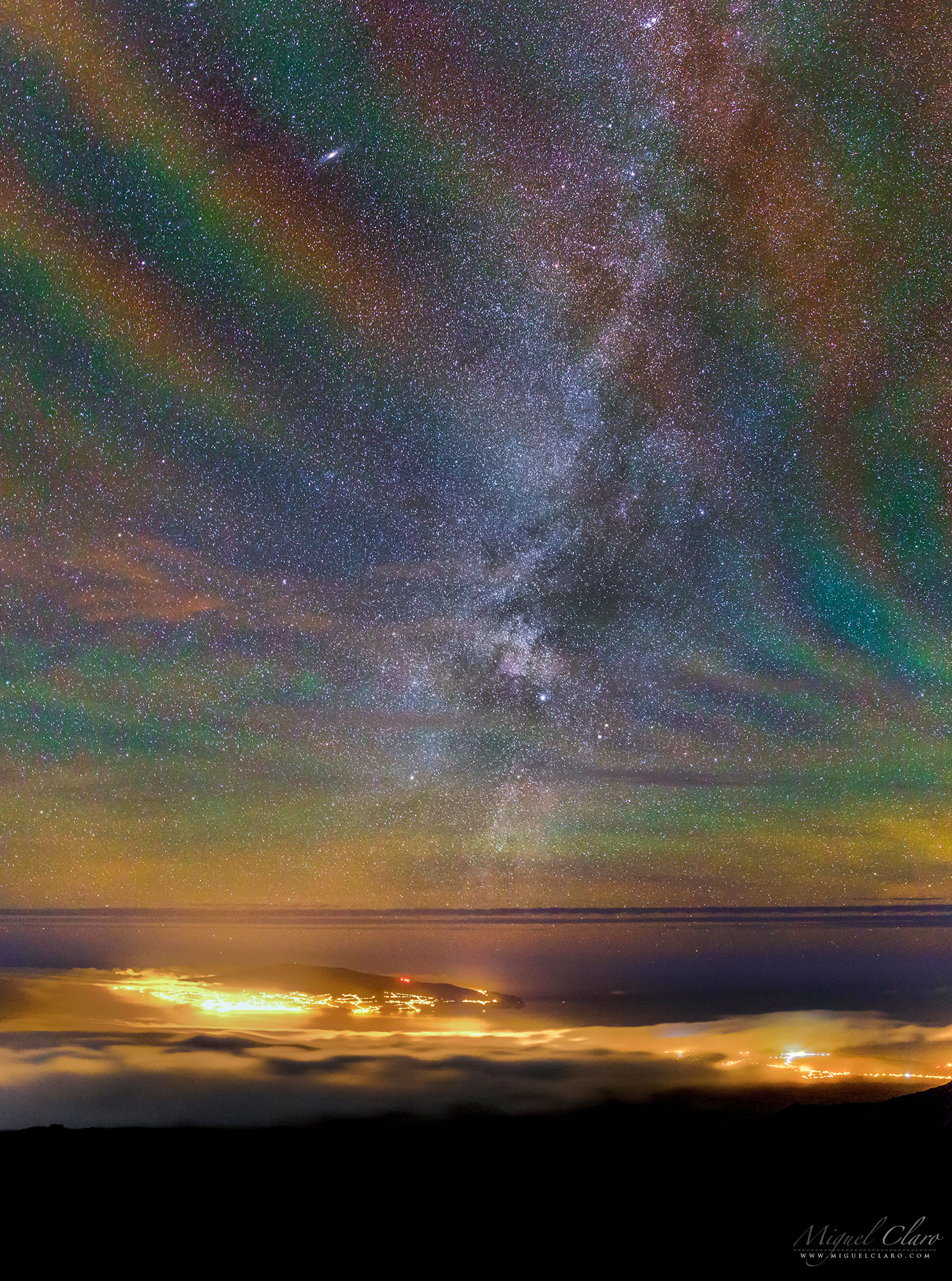The Cosmos with Airglow
Airglow. Now air glows all of the time, but it is usually hard to see. A disturbance however — like an approaching storm — may cause noticeable rippling in the Earth’s atmosphere. These gravity waves are oscillations in air analogous to those created when a rock is thrown in calm water. The long-duration exposure nearly along the vertical walls of airglow likely made the undulating structure particularly visible. OK, but where do the colors originate? The deep red glow likely originates from OH molecules about 87-kilometers high, excited by ultraviolet light from the Sun. The orange and green airglow is likely caused by sodium and oxygen atoms slightly higher up. The featured image was captured during a climb up Mount Pico in the Azores of Portugal. Ground lights originate from the island of Faial in the Atlantic Ocean. A spectacular sky is visible through this banded airglow, with the central band of our Milky Way Galaxy running up the image center, and M31, the Andromeda Galaxy, visible near the top left. During a climb to the highest mountain of Portugal (2351m), Pico mountain, in Pico island – Azores, I stopped at about 1200 meters to appreciate the views and photograph the lights coming from the island of Faial in the middle of the Atlantic Ocean, during the night in a rare occasion with only a few clouds with part of the “winter” Milky Way visible. Above the low clouds, I have captured strange “rainbow bands” of airglow. The bands are actually huge parallel structures in the thermosphere 90 km upwards. Perspective makes them appear to converge. This Gravity Waves* (not confuse with gravitational waves) propagating upwards from disturbances lower down in the atmosphere, are likely the source of the bands. The wave amplitude increases with height (reducing density) and wavelengths can be thousands of kilometers.Airglow is the light of electronically and/or vibration-rotationally excited atoms and molecules high in Earth’s atmosphere, by solar ultra-violet radiation. In this image, we can see almost each possible airglow color appearing on a single band. The green airglow is from oxygen atoms (1S ->1D) 90-100 km high. The red/orange could be yet more oxygen airglow, this time from atoms 150-300km high where the atmosphere is so sparse and collisions so infrequent that the atoms have time to radiate ‘forbidden’ light (1D ->3P) before losing their electronic excitation in impacts with other atoms and molecules. Deep red banded airglow is likely emission from vibrationally excited OH radicals in a layer ~86km high. The bands are caused by gravity waves propagating upwards from the lower atmosphere. They modulate the local pressure, temperature and specie concentrations. Blue airglow is much much fainter and not very obvious on the image. Excited molecular oxygen at ~95 km high can produce it. The excitation is indirect. Possible routes are via daylight dissociation of N2 and NO or twilight recombination of NO+ whose reaction products generate excited O2. The oxygen the
